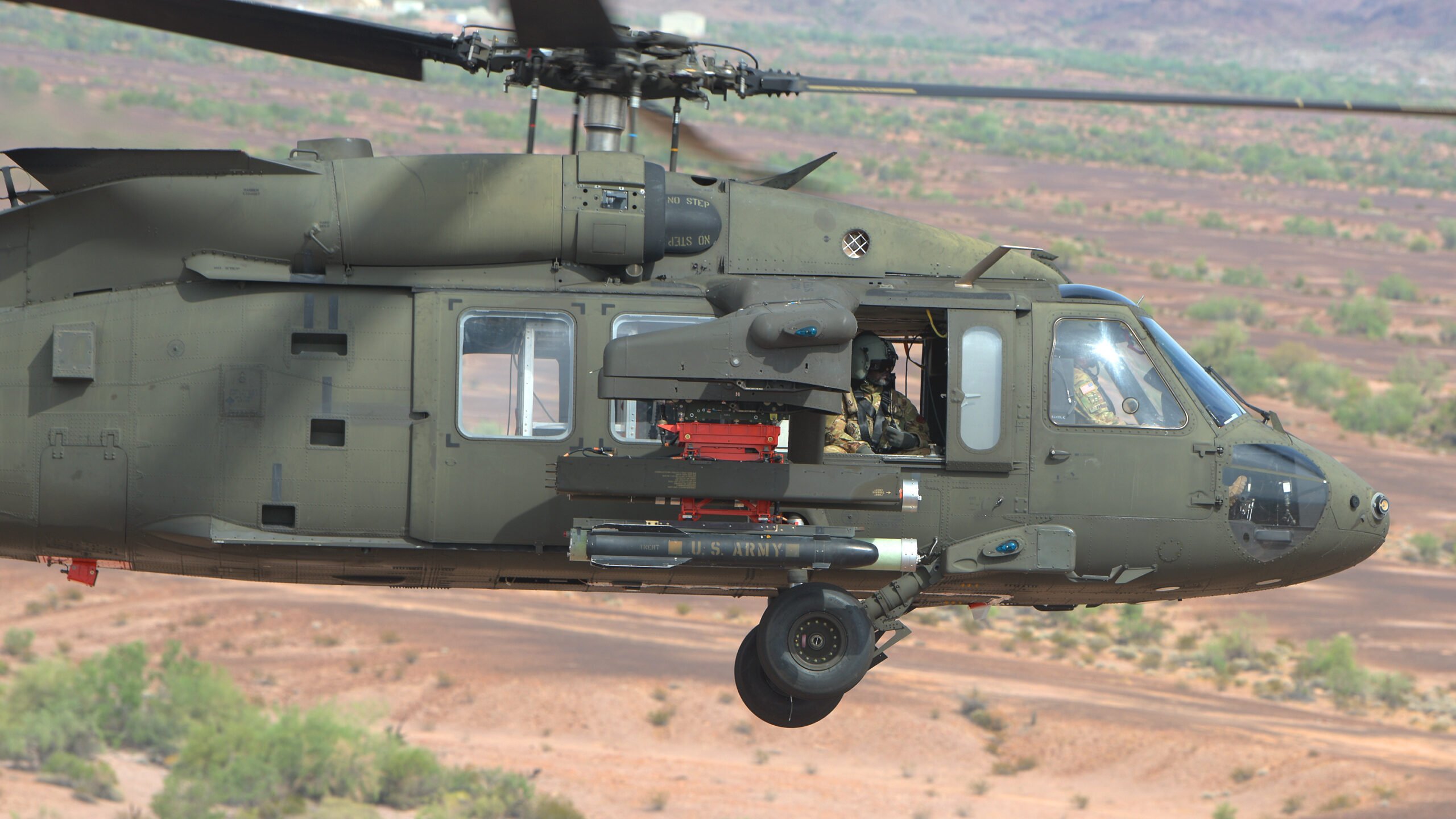
The Future Vertical Lift Cross-Functional Team used the UH-60 Blackhawk as a surrogate for its Modular Effect Launcher at Project Convergence. (Courtesy of FVL CFT)
LONDON: The US and British armies have agreed to pursue a “Future Vertical Lift Cooperative Program Feasibility Assessment,” which aims to ensure interoperability between their respective rotorcraft aviation forces in the future.
The assessment, signed Feb. 14 in London by Maj. Gen. Walter Rugen, US Army Future Vertical Lift (FVL) Cross-Functional Team director, and Maj. Gen. James Bowder, Director Futures, UK Ministry of Defence, outlines how both nations will “share information about their future rotorcraft requirements and programs.”
The assessment features four lines of effort: the US Army’s Future Long-Range Assault Aircraft (FLRAA) and Future Attack Reconnaissance Aircraft (FARA) programs; Future Unmanned Aerial Systems; Air-Launched Effects; and Open Systems Architecture.
The agreement provides the UK MoD with access to US Army requirements documents which could be used to inform their own decision-making processes — something which is not currently available to other NATO partners.
These could be used to assist in the development of future rotorcraft requirements by the UK MoD which will also be in a position to purchase US Army FVL capabilities in the future.
“The assessment will explore and analyze new concepts for the employment of coalition air power in the lower tier air domain,” a US Army statement read.
“Both countries will identify ways to reduce costs and risks associated with each country’s programs. It benefits both nations to create platforms that will operate in a cohesive manner for success on future battlefields, so we want to cooperate and share information on the research, development, testing and evaluation of future rotorcraft. We’ll take what we learn and use it to benefit our national defense capabilities,” the statement continued.
“Regularly working together and meeting to develop joint study materials will enable [us] to identify options for cooperation in future phases of our modernization efforts. The focus of this project arrangement is interoperability between our forces in future coalition multi-domain operations, regardless of what particular aircraft either country procures in the future.”
Responding to the agreement, the UK MoD’s Bowder described how collaboration in science and technology would help determine the “future direction” of UK and US aviation in the age of great power competition and conflict.
Speaking to Breaking Defense Feb. 16 at the International Military Helicopter conference in London, Brig. Gen. Robert Barrie, head of the US Army’s Program Executive Office-Aviation explained: “I think that collaboration is going to be important. And it’s going to better inform what we’re doing to see where the opportunities are for that in either joint cooperation, or maybe, you know, participating in something else” with the UK, he said.
“I think that’s where their interest lies; being able to see those requirements, putting into their studies models and making sure it’s going to fit into their relationship,” he said.
Barrie hailed the agreement as a “significant and initial step” to maximize interoperability between UK and US forces.
“I think we want to see interoperability as we digitize our forces, especially in our aviation formations. That’s the focus,” Barrie explained before confirming the assessment will “kick-off” at the annual Experimental Demonstration Gateway Exercise (EDGE) at Dugway Proving Ground, Utah in April and May.
According to Rugen, the US Army will conduct a “number of work-ups across a host of international partners including the UK [who will be] bringing systems that we will integrate into a number of our tactical tasks.” Planning is ongoing, he said.
Technology areas of interest being pursued by the UK and US at EDGE include networks and waveforms; multi-sensing; medical evacuation; air assault; and hasty attack, Rugen confirmed.
The assessment also paves the way for the UK MoD to participate at the Army Futures Command’s Project Convergence exercise in October and November this year.
Sullivan says Ukraine supplemental should cover all of 2024, long-range ATACMS now in Ukraine
“We now have a significant number of ATACMS coming off their production line and entering US stocks,” Jake Sullivan said today. “And as a result, we can move forward with providing the ATACMS while also sustaining the readiness of the US armed forces.”


























